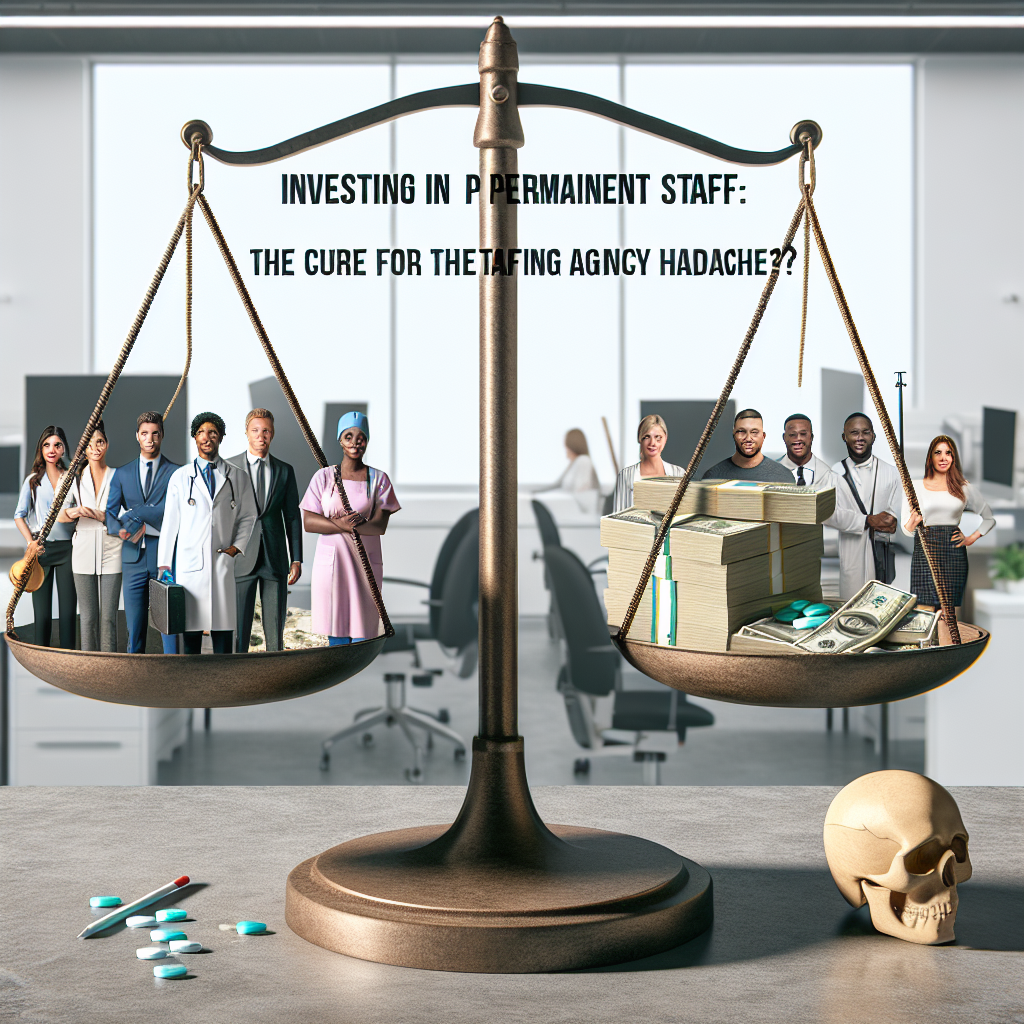New York, NY—As healthcare facilities, particularly nursing homes, struggle to balance quality care with budget constraints, the trend of relying on staffing agencies for nursing staff has been under the microscope. A recent shift towards investing in permanent staff is emerging as not just a financially sound strategy but a cure for the long-standing staffing agency headache. This move, however, has raised concerns and challenges, particularly for nursing homes grappling with its implications.
The crux of the issue lies in the precarious balance between cost and care quality. Staffing agencies, often seen as a quick fix for filling vacancies, come with a hefty price tag. “Facilities that rely heavily on agency staff tend to spend about 1.5 to 2 times more on staffing than those who invest in a permanent workforce,” according to healthcare industry analyst Jessica Smith. This statistic sheds light on the economic inefficiencies and sustainability concerns associated with staffing agencies.
The adverse impacts of staffing agencies extend beyond just financial aspects. The transient nature of agency staff can disrupt the continuity of care, affecting the overall patient experience. Permanent staff, on the other hand, provide a sense of stability and familiarity, aspects that are particularly critical in the senior care sector. The emotional and psychological wellbeing of nursing home residents often hinges on consistent and personalized care, a feat challenging to achieve with a revolving door of temporary staff.
Yet, the transition towards a more permanent staffing model is fraught with its own set of challenges for nursing homes. The initial investment in recruiting, training, and retaining full-time employees can be daunting. Additionally, the current healthcare labor market is highly competitive, with a notable scarcity in skilled nursing professionals. This dynamic has put nursing homes in a difficult position, competing not only against each other but against more lucrative healthcare settings for a limited pool of candidates.
Moreover, the regulatory environment and funding mechanisms for nursing homes often do not support the shift towards permanent staffing. Many facilities operate on thin margins, with reimbursement rates that do not always reflect the true cost of providing care. Investing in a permanent staff requires not just financial resources but a strategic vision that aligns with long-term sustainability and quality care goals.
Despite these challenges, the benefits of a permanent staffing model—enhanced patient care, improved staff morale, and ultimately, financial savings—cannot be ignored. It calls for a concerted effort among policymakers, healthcare providers, and the community at large to address the systemic issues plaguing the nursing home sector. The headache associated with staffing agencies might just be the symptom of a larger ailment—one that requires a holistic cure focused on sustainable staffing solutions.
As nursing homes navigate these complex waters, the move towards investing in permanent staff remains a promising yet challenging endeavor. It represents a paradigm shift in how we approach healthcare staffing, one that prioritizes long-term wellbeing over short-term fixes. The journey towards this shift is fraught with obstacles, but the potential rewards for patients, staff, and the healthcare system as a whole are too significant to ignore.


